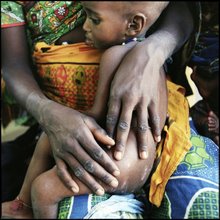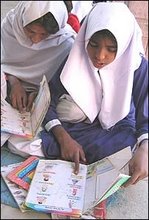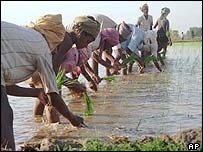PREAMBLE: For this issue, we lay out the mainstream terms used in this increasingly complex field of humanitarian concern, and offer a selection of statistics on the dimensions of the refugee movement globally. Our sources include Refugees International (RI), a US based organization started in 1979 as a citizens’ movement to protect Indochinese refugees. Since then, RI has expanded to become a leading advocacy organization that provokes action from global leaders to resolve refugee crises. RI does not accept government or UN funding. We select global trends (2012) from the United Nations High Commissioner for Refugees (UNHCR) publication on Displacement the New 21st Century Challenge, and we develop a brief statement on “environmental refugees” from a National Geographic sources (references cited below).
REFUGEES, ASYLUM SEEKERS, DISPLACED AND STATELESS PERSONS
The following terms have been extracted verbatim from Refugees International website:
Who is a Refugee?
A refugee is legally defined as a person who is outside his or her country of nationality and is unable to return due to a well-founded fear of persecution because of his or her race, religion, nationality, political opinion, or membership in a particular social group. By receiving refugee status, individuals are guaranteed protection of their basic human rights, and cannot be forced to return to a country where they fear persecution.
In 2012, there were 15.4 million refugees around the world, including 4.8 million Palestinian refugees. According to the UN Refugee Agency, the leading countries of origin for refugees in 2012 were:
· Afghanistan: 2.6 million
· Somalia:1.1 million
· Iraq: 746,000
· Syria: 728,500
· Sudan: 569,200
· DRC: 509,400
Who is an Internally Displaced Person (IDP)?
Internally displaced people (IDPs) have been forced to leave their homes as a result of armed conflict, generalized violence, or human rights violations, but unlike refugees they have not crossed an international border. Although internally displaced people outnumber refugees by more than two to one, no single UN or other international agency has responsibility for responding to internal displacement. As a result, the global response to the needs of IDPs is often ineffective.
In 2011, there were an estimated 28.8 million people displaced internally by conflict. The largest populations of internally displaced people are found in:
· Colombia: 4.9 - 5.5 million
· Sudan/South Sudan: About 3 million
· DR Congo: 2.6 million
· Iraq: Up to 2.1 million
· Somalia: 1.1 million
Who is a Stateless Person?
Stateless people are individuals who do not have a legal bond of nationality with any state, including people who have never acquired citizenship of their birth country or who have lost their citizenship and have no claim to citizenship of another state. Children of stateless people often are born into statelessness and few manage to escape that status. According to the 1954 Convention relating to the Status of Stateless Persons, a de jure stateless person is someone “not considered as a national by any State under the operation of its law.” Persons are considered de facto stateless if they have an ineffective nationality, cannot prove they are legally stateless, or if one or more countries dispute their citizenship. The Office of the UN High Commissioner for Refugees (UNHCR) has the international mandate for responding to the needs of stateless people and leading the global effort to reduce statelessness. Historically, however, the agency has devoted few resources to this aspect of its mandate.
There are an estimated ten million stateless people around the world. Refugees International focuses its efforts on reducing statelessness, particularly for the following populations:
· Syria: more than 300,000 denationalized Kurds
· Kuwait: 93,000 Bidoon
· Dominican Republic: an estimated 900,000 to 1.2 million undocumented individuals of Haitian origin, many of who are stateless or at risk of statelessness.
What is an Asylum Seeker?
An asylum seeker is a person who is seeking to be recognized as a refugee, but has not yet received formal refugee status. During 2012, some 893,700 individual applications for asylum or refugee status were submitted to governments and UNHCR offices in 166 countries. 2012 saw a significant number of people seeking asylum or refugee status from countries experiencing recent or ongoing conflict or security concerns. This includes asylum-seekers originating from Afghanistan, Somalia, the Syrian Arab Republic, and DR Congo.
Under international law, refugees must not be forced back to the countries they have fled. This principle of non-refoulement is the key provision of the 1951 UN Refugee Convention, which defines international law and guidelines to protect refugees. Host governments are primarily responsible for protecting refugees and most states fulfill their obligations to do so. Others, however, avoid their responsibility by pointing to a lack of resources, threats to national security, fears of domestic political destabilization, or the arrival of even greater numbers of refugees. This is a violation of international law that is binding on all states.
What are the solutions to refugee and displacement crises?
The UN Refugee Agency (UNHCR) speaks of three “durable solutions” to refugee crises: return; local integration; and third country resettlement.
The most desirable way to end forced displacement is for people to return home when conflict ends. To return in safety and dignity, families need help with transportation and require basic goods for restarting their lives, including a provisional supply of food, seeds and tools, and building materials for home repair or construction. In addition, support for the reconstruction of schools and health clinics is also critical.
If instability persists or if the individual will face persecution when they return, then integrating into the country of asylum is another option. Most countries hosting refugees, however, are reluctant to allow refugees to integrate and become citizens, fearing competition for scarce resources between the refugees and residents of a particular locale.
Resettlement to a third country can also be a solution for refugees who cannot return home, cannot establish a new life in their country of asylum, or are considered to be particularly vulnerable. Resettlement can never be an option for more than a tiny minority of the world’s refugee population, but still benefits tens of thousands of refugees who have made new lives in countries such as the United States, Canada, Sweden, and Norway
SELECTED GLOBAL STATISTICS FROM THE 2012 REFUGEE SITUATION
An estimated 7.6 million people were newly displaced due to conflict or persecution, including 1.1 million new refugees - the highest number of new arrivals in one year since 1999. Another 6.5 million people were newly displaced within the borders of their countries – the second highest figure of the past ten years.
During the year, conflict and persecution forced an average of 23,000 persons per day to leave their homes and seek protection elsewhere, either within the borders of their countries or in other countries.
Some 35.8 million persons were of concern to UNHCR by end 2012, the second highest number on record. Of this figure, 17.7 million were IDPs and 10.5 million were refugees - 2.3 million people more than in 2011. The refugee figure was close to that of 2011 (10.4 million) and the number of IDPs had increased by 2.2 million since end 2011.
Statelessness is estimated to have affected at least 10 million people in 2012; however, data captured by governments and communicated to UNHCR were limited to 3.3 million stateless individuals in 72 countries.
Developing countries hosted over 80 per cent of the world’s refugees, compared to 70 per cent ten years ago. The 49 Least Developed Countries were providing asylum to 2.4 million refugees by year-end.
Pakistan was host to the largest number of refugees worldwide (1.6 million), followed by the Islamic Republic of Iran (868,200), Germany (589,700) and Kenya (565,000).
More than half of the refugees under UNHCR’s mandate resided in countries where the GDP per capita was below USD 5,000. Pakistan hosted the largest number of refugees in relation to its economic capacity with 552 refugees per 1 USD GDP (PPP) per capita. Ethiopia (303) and Kenya (301) ranked second and third, respectively.
More than half (55%) of all refugees worldwide came from five countries: Afghanistan, Somalia, Iraq, the Syrian Arab Republic, and Sudan.
Over the course of 2012, 526,000 refugees repatriated voluntarily, half of them either to Afghanistan, Iraq or Côte d’Ivoire. This figure was similar to that of 2011 (532,000), and while an improvement on the figures of 2009 and 2010, it was still lower than those of all other years in the past decade.
During the year UNHCR submitted over 74,800 refugees to States for resettlement, and more than 71,000 departed with UNHCR’s assistance. According to governmental statistics, 22 countries admitted 88,600 refugees for resettlement during 2012 (with or without UNHCR’s assistance). The United States of America received the highest number (66,300).
More than 893,700 people submitted individual applications for asylum or refugee status in 2012. UNHCR offices registered 13 per cent of these claims. With an estimated 70,400 asylum claims, the United States of America was the world’s largest recipient of new individual applications, followed by Germany (64,500), South Africa (61,500), and France (55,100).
Some 21,300 asylum applications were lodged by unaccompanied or separated children in 72 countries in 2012, mostly by Afghan and Somali children. It was the highest number on record since UNHCR started collecting such data in 2006.
Refugee women and girls accounted for 48 per cent of the refugee population in 2012, a proportion that has remained constant over the past decade.
More than half of the refugees under UNHCR’s mandate resided in countries where the GDP per capita was below USD 5,000. Pakistan hosted the largest number of refugees in relation to its economic capacity with 552 refugees per 1 USD GDP (PPP) per capita. Ethiopia (303) and Kenya (301) ranked second and third, respectively.
More than half (55%) of all refugees worldwide came from five countries: Afghanistan, Somalia, Iraq, the Syrian Arab Republic, and Sudan.
Over the course of 2012, 526,000 refugees repatriated voluntarily, half of them either to Afghanistan, Iraq or Côte d’Ivoire. This figure was similar to that of 2011 (532,000), and while an improvement on the figures of 2009 and 2010, it was still lower than those of all other years in the past decade.
During the year UNHCR submitted over 74,800 refugees to States for resettlement, and more than 71,000 departed with UNHCR’s assistance. According to governmental statistics, 22 countries admitted 88,600 refugees for resettlement during 2012 (with or without UNHCR’s assistance). The United States of America received the highest number (66,300).
More than 893,700 people submitted individual applications for asylum or refugee status in 2012. UNHCR offices registered 13 per cent of these claims. With an estimated 70,400 asylum claims, the United States of America was the world’s largest recipient of new individual applications, followed by Germany (64,500), South Africa (61,500), and France (55,100).
Some 21,300 asylum applications were lodged by unaccompanied or separated children in 72 countries in 2012, mostly by Afghan and Somali children. It was the highest number on record since UNHCR started collecting such data in 2006.
Refugee women and girls accounted for 48 per cent of the refugee population in 2012, a proportion that has remained constant over the past decade.
Children below 18 years constituted 46 per cent of the refugee population in 2012. This was in line with 2011 but higher than a few years ago.
Sources:
· Refugees International website http://www.refintl.org/get-involved/helpful-facts-%2526-figures Accessed August 17, 2013
· UNHCR’s publication on Displacement the New 21st Century Challenge http://unhcr.org/globaltrendsjune2013/UNHCR%20GLOBAL%20TRENDS%202012_V05.pdf
ADDITIONAL CONSIDERATIONS
Refugee streams from Smaller Countries: Absolute numbers are most relevant to the magnitude and management of this global issue. However, refugee movements from relatively small countries, may also contribute disproportionately from their populations as a whole.
Case Study: The Lhotshampa, people of Nepali origin, began settling in southern Bhutan in the late 19th century. In the 1980s Lhotshampas, being seen as a threat to the political order, were subjected to measures that discriminated against them. When they organised demonstrations, several thousands were imprisoned, and more than 2000 tortured, according to Amnesty International, although few were formally charged. Thousands fled to India and Nepal. In the 1990s, Bhutan (current population approx. 750,000) expelled nearly one-fifth of its population in the name of preserving its culture and identity, claiming that those expelled were illegal residents. By 1992, there were more than 80,000 living in UNHCR camps in south eastern Nepal. By 1996, camp populations had increased to 100,000 <http://en.wikipedia.org/wiki/Bhutanese_refugees>. Since 2008, the International Organization for Migration (IOM) and UNHCR jointly commenced resettlement programs to many countries e.g., USA, Australia, Canada and others. More than 50,000 refugees have already been settled in those countries.
Reference: Hutt M, School of Oriental and African Studies, University of London, at: http://www.photovoice.org/bhutan/index.php?id=3 Accessed August 17, 2013
Environmental and Climate Refugees: Environmental refugees include immigrants forced to flee because of natural disasters, such as volcanoes and tsunamis. Climate refugees are a subgroup within this, and considered to be an increasing phenomenon due to the impact of climate change both in terms of displacement due to climate related inundation and desertification, and related human conflict surrounding increasingly scarce resources in such settings. The International Red Cross estimates that there are more environmental refugees than political refugees fleeing from wars and other conflicts. The UNHCR states 36 million people were displaced by natural disasters in 2009, the last year such a report was taken. Scientists predict this number will rise to at least 50 million by 2050. Some say it could be as high as 200 million.
Sources:
· Refugees International website http://www.refintl.org/get-involved/helpful-facts-%2526-figures Accessed August 17, 2013
· UNHCR’s publication on Displacement the New 21st Century Challenge http://unhcr.org/globaltrendsjune2013/UNHCR%20GLOBAL%20TRENDS%202012_V05.pdf
ADDITIONAL CONSIDERATIONS
Refugee streams from Smaller Countries: Absolute numbers are most relevant to the magnitude and management of this global issue. However, refugee movements from relatively small countries, may also contribute disproportionately from their populations as a whole.
Case Study: The Lhotshampa, people of Nepali origin, began settling in southern Bhutan in the late 19th century. In the 1980s Lhotshampas, being seen as a threat to the political order, were subjected to measures that discriminated against them. When they organised demonstrations, several thousands were imprisoned, and more than 2000 tortured, according to Amnesty International, although few were formally charged. Thousands fled to India and Nepal. In the 1990s, Bhutan (current population approx. 750,000) expelled nearly one-fifth of its population in the name of preserving its culture and identity, claiming that those expelled were illegal residents. By 1992, there were more than 80,000 living in UNHCR camps in south eastern Nepal. By 1996, camp populations had increased to 100,000 <http://en.wikipedia.org/wiki/Bhutanese_refugees>. Since 2008, the International Organization for Migration (IOM) and UNHCR jointly commenced resettlement programs to many countries e.g., USA, Australia, Canada and others. More than 50,000 refugees have already been settled in those countries.
Reference: Hutt M, School of Oriental and African Studies, University of London, at: http://www.photovoice.org/bhutan/index.php?id=3 Accessed August 17, 2013
Environmental and Climate Refugees: Environmental refugees include immigrants forced to flee because of natural disasters, such as volcanoes and tsunamis. Climate refugees are a subgroup within this, and considered to be an increasing phenomenon due to the impact of climate change both in terms of displacement due to climate related inundation and desertification, and related human conflict surrounding increasingly scarce resources in such settings. The International Red Cross estimates that there are more environmental refugees than political refugees fleeing from wars and other conflicts. The UNHCR states 36 million people were displaced by natural disasters in 2009, the last year such a report was taken. Scientists predict this number will rise to at least 50 million by 2050. Some say it could be as high as 200 million.
Reference: National Geographic Education website. Accessed August 17, 2013. http://education.nationalgeographic.com/education/encyclopedia/climate-refugee/?ar_a=1


























